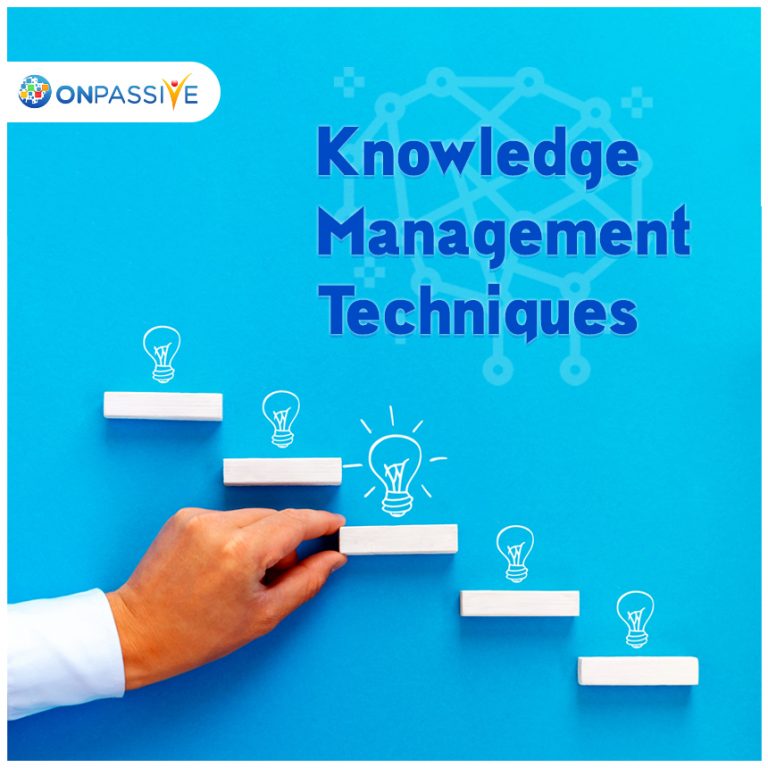
A hierarchical and progressive corporate structure is probably the biggest problems for organizations. In any case, such an arrangement can be reshaped by executives when they create and develop knowledge sharing and inspire employees to establish new thoughts for an ideal environment among business units and departments.
A triumphant knowledge management program expands staff profitability, product and service quality, and deliverable consistency by benefiting and capitalizing on intellectual and knowledge-based resources. Notwithstanding, implementation can be a challenge.
Eager to reap the rewards and benefits, numerous organizations jump into a knowledge management solution without considering the destinations they wish to satisfy or how they will adopt and follow best practices for dealing with its knowledge assets long haul.
Preferably, knowledge management includes collecting, characterizing, structuring, storing, and sharing information and encounters of current and past employees and pioneers within an organization. Whenever progressed admirably, it achieves about an innovative, knowledgeable, and quick organization in decision-making. It also helps upgrade and enhance new employees’ onboarding cycle, business processes, and employee engagement.
Here are tips to upgrade and enhance knowledge management in an organization:
Impart the significance of knowledge management
Knowledge management can without much of a stretch sneak off employees’ minds on the off chance that they don’t have a valid justification to practice it. It is a great idea to communicate knowledge management’s significance to your workforce, featuring what they remain to pick up from it. Employees can practice knowledge sharing when they comprehend the idea better.
You can likewise present knowledge management practices within the workforce. For example, you can encourage employees to record what they have realized and learned at the end of the day, week, or month. Have a characterized method of how to structure it in the knowledge database. Employees should likewise be permitted to add on to it or air their conclusions on the equivalent.
Employ and utilize a reliable knowledge management tool
A definitive target of knowledge management should be to make frameworks and procedures to utilize the gathered knowledge to fair use effectively.
Be that as it may, Knowledge management isn’t as simple as it sounds. Numerous organizations battle with passing knowledge inside the workforce, prompting to process redundancies. Receiving a dependable knowledge management tool helps organizations to deal with the data more readily. For better business processes, employees should have the option to access knowledge on whatever point they need. This tool can go about as a unified and centralized location where knowledge is effectively accessible to all.
Extend training on the utilization of the tool
Having a knowledge management tool is a specific something, yet realizing how to utilize it is another thing. As said above, employees should have the option to get to this knowledge management tool at any given time. Notwithstanding, if they can’t discover what they need because of an absence of information on the most proficient method to utilize the centralized location, processes will delay.
The tools should be easy to use, and adequate training to guarantee that employees can look and discover what they need without any problem.
Improve employee engagement and commitment
Employees can retain knowledge from the rest of the team on the off chance that they don’t feel engaged in an organization. It is essential to improve employee engagement at all levels.
You can begin by valuing their commitment to the overall goals of the organization. Please tune in to their feedback and profoundly care for their welfare. What’s more, create a sense of community by uniting employees in meetings, festivities, and functions. Cultivate an environment of open correspondence and socializing. Employees will share and team up when they feel a sense of belonging.
Select and appoint a knowledge manager
Some knowledge articles could be obsolete, requiring updating. Others could be outdated; needing should erase from the database. While it is essential to allow everybody has access and a say to the knowledge database, permitting everybody to oversee it can only lead to confusion. You need a knowledgeable individual to go about as a knowledge manager. He should have the option to gauge the adequacy of knowledge articles to distinguish those that need updating or erasing.
Conclusion
Each bit of information is essential to an organization. However, it becomes futile on the off chance that it isn’t held, shared, and reused. It is imperative to exploit areas of knowledge gathering. As employees leave the organization, it is critical to passing the best processes to the incoming individual in those positions. Make every effort to store this information and to cultivate a culture of knowledge sharing.



Irma geneste
3 years ago